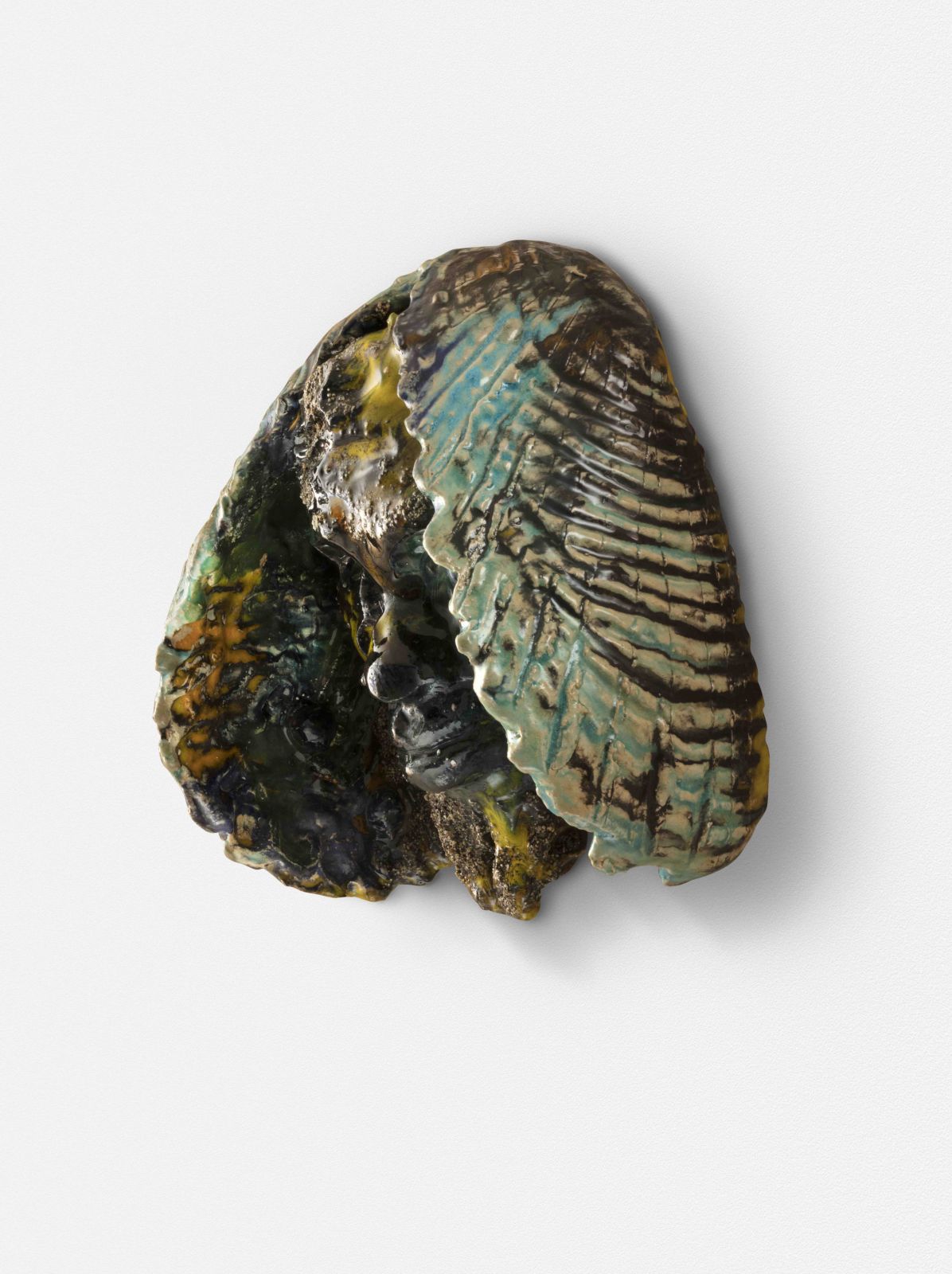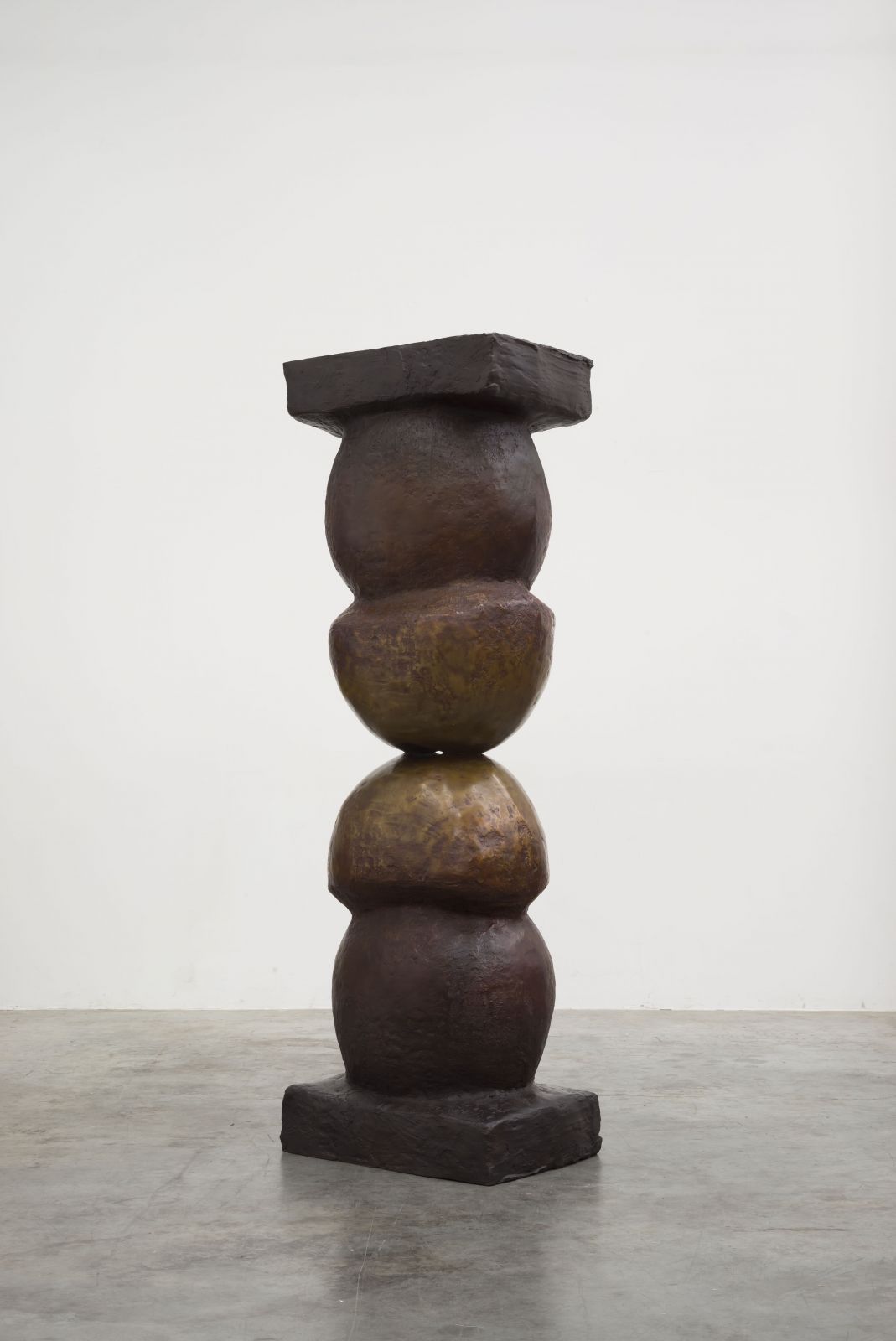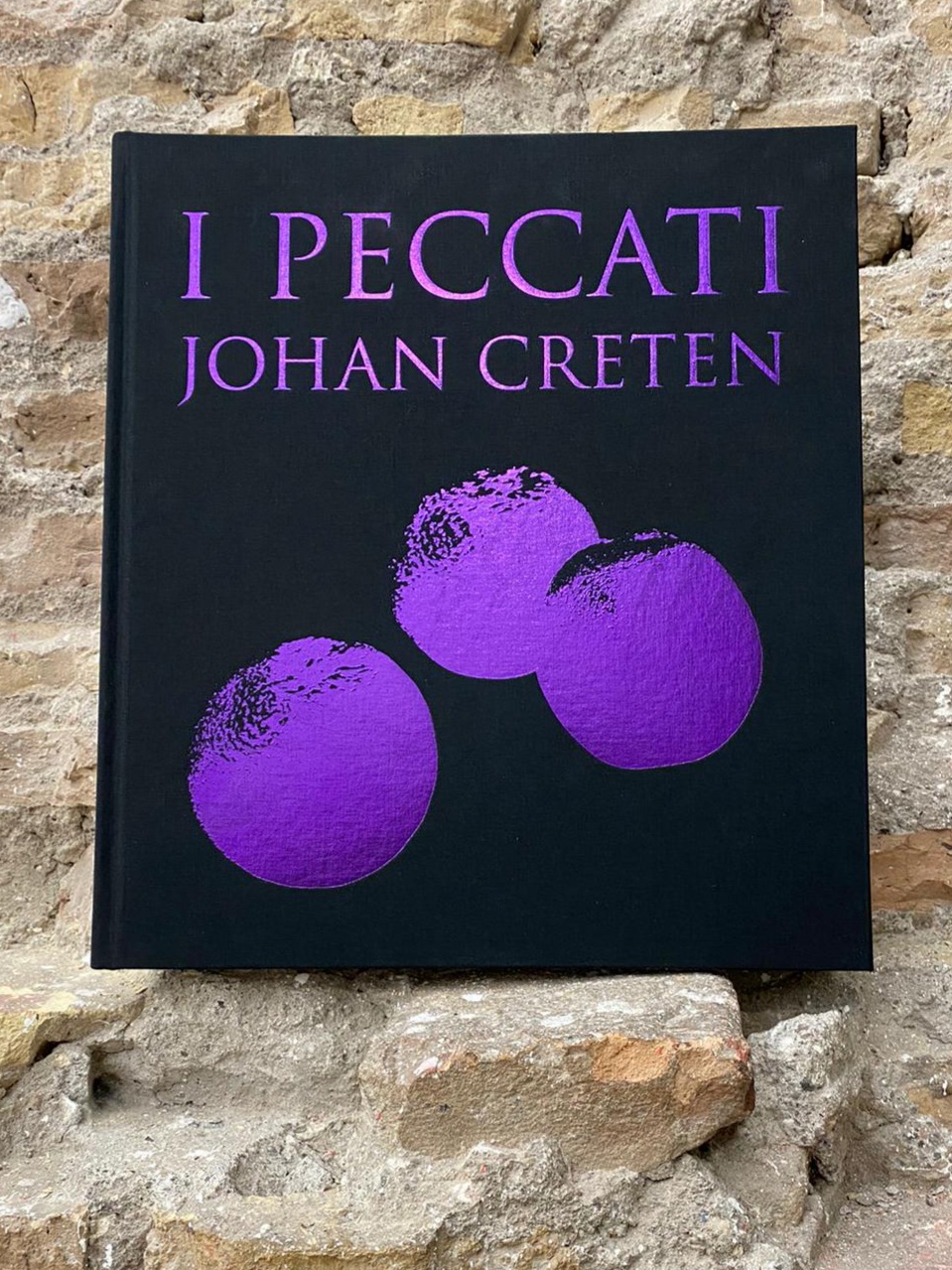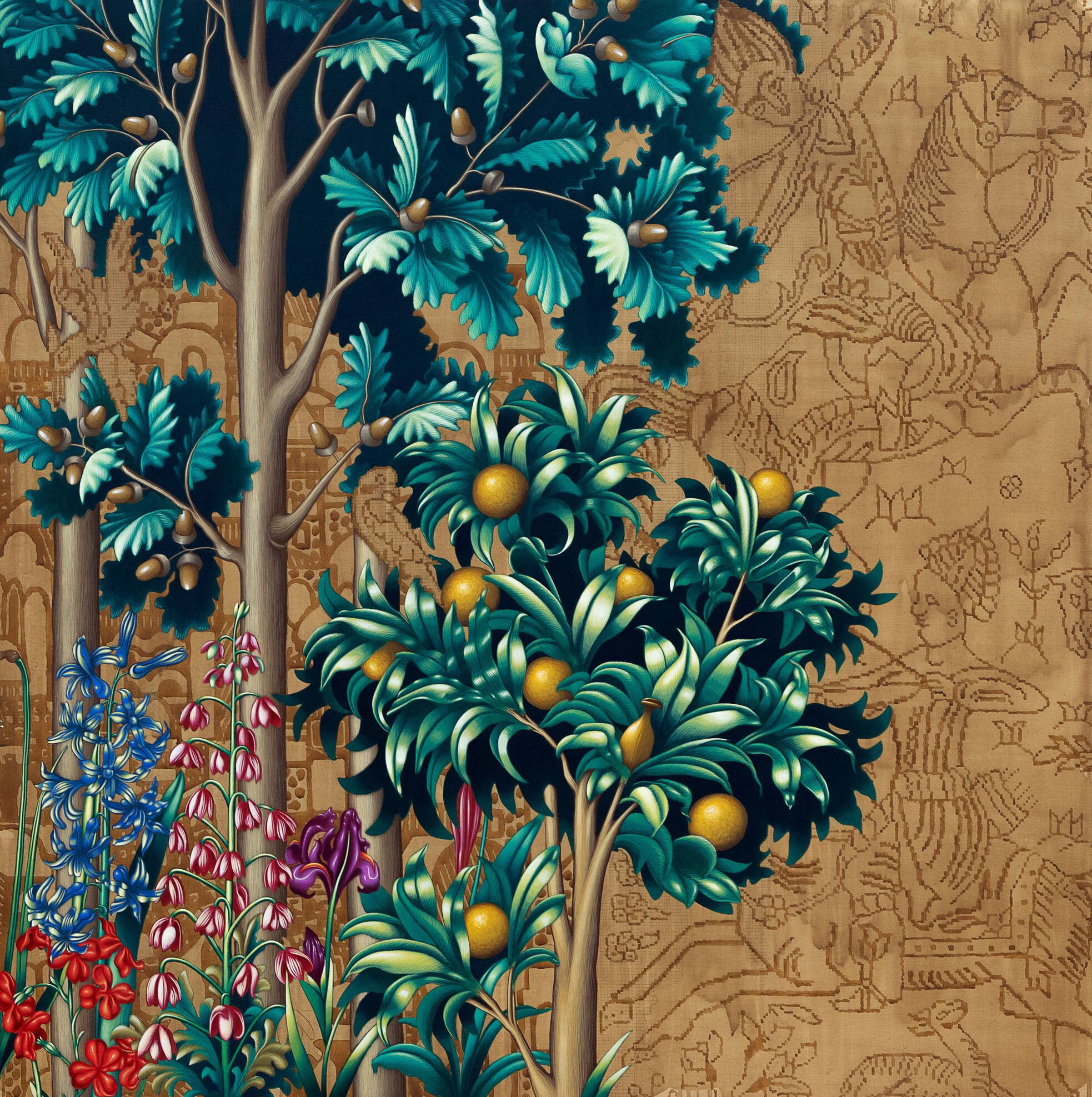Search
The Académie de France à Rome – Villa Médicis hosted the exhibition “I Peccati”, by Johan Creten, from October 15, 2020 to May 23, 2021, curated by Noëlle Tissier. The exhibition was organized by the Académie de France à Rome – Villa Médicis with the support of the Almine Rech and Perrotin galleries.
The “I Peccati” exhibition brings together, for the first time and on such a scale in Italy, a group of fifty-five works by Johan Cohen in bronze, ceramics and resin. They will be juxtaposed with historical works by Lucas Van Leyden (1494-1533), Hans Baldung (1484-1545), Jacques Callot (1592-1635), Barthel Beham (1502-1540) and Paul van Vianen (1570-1614), milestones underlying Johan Creten’s thinking.
The first room opens with a series of creations and re-creations of conceptual works from 1986. Placed alongside “The Garden” (created in 1996-97 during the artist’s residency at Villa Medici) and more seminal works such as “Présentoir d’Orange” (1989-2017) and “Plantstok” (1989-2012), this room questions our relationship to introspection and self-awareness, summoning up the notion of paradise lost and temptation.
In the second room, a new monumental work in resin, “Muses and Medusas”, begun in 2005 and completed in 2019, dialogues with pieces from the famous metonymic series “Odore di Femmina” (begun in 1998) on seduction and the ambiguity of human feelings and relationships.
A third section brings together highly political works including the bronze “The Price of Freedom” (2015), “Couch Potatoes” (1997) and a new series of ceramics “Wargames” (2019).
On the way up the stairs, a group of enigmatic bronzes overhangs and poses the question of moral conscience in a society caught up in continuous, profound change. The monumental sculpture “The Herring” towers 5 metres above the final section.
An original sculpture, produced in collaboration with the historic Porzellanmanufaktur Augarten workshops in Vienna, revisits a Doccia porcelain and will be unveiled to the public for the first time.
Scattered throughout the space, a new “Bolders” series in glazed stoneware invites the public to sit back, take their time, observe the works to discover hidden connections and dive into breathtaking details. Shimmering glass surfaces, textured patinas, metaphors and hidden meanings borrow from urban “secret handshakes”.
Johan Creten talks about “Slow art” and the need to return to introspection. A movement, ranging from miniature to monumental figures, that allows us to take our time and immerse ourselves in an exploration of the world with its individual and societal torments, for a journey filled with surprises and emotions.
Johan Creten’s sculptures created especially for the exhibition between 2019 and 2020, together with pieces that punctuate his career from the 1980s to the present day, are combined here with 16th and 17th century prints, tapestries and bas-reliefs from the artist’s personal collection. These historical works are references in the artist’s creative process. They reveal his preoccupations, whether artistic, historical, political or philosophical. The interweaving of these works in the exhibition disrupts our perception through multiple points of view that, from the past, question the future of our humanity.
“With Johan Creten, there are no seven sins. Seven is the same as the number of sacraments in the Bible and the number of hills in Rome. Here, sins are infinite and limitless, inexhaustible. They cannot be counted, only named. Not all sins are capital; they can be imperial, imperious, peripheral, insidious, insignificant, invisible. They are always beyond calculation and language.
The seven deadly sins pale in comparison with silliness, barbarity, boredom, mutilation, regret, melancholy and fear – in short, with life. Johan Creten’s sculptures have nothing to do with morality or punishment, with the cleaver or censorship. They are about sin, about life infused with desire and pain, hope and sorrow, lust and anger, love and death, Eros and Thanatos. They speak of amphibious life, between Styx and Paradise. They speak of impulsive life, when hearts beat, when snakes coil, when wings unfurl, when vulvas open, when the curtain parts to reveal the naked truth, this hypnotic Medusa. Isn’t sin the tired form of purity? Doesn’t it point to our condition as sovereignly fallible human beings? Is sin not, in Victor Hugo’s words, a marvellous ‘gravitation’?
Colin Lemoine
“With Johan Creten, there are no seven sins. Seven, that implacable number that’s the same as the number of sacraments in the Bible and the number of hills in Rome. Here, sins are infinite and limitless, inexhaustible. They cannot be counted, only named. Not all sins are capital; they can be imperial, imperious, peripheral, insidious, insignificant, invisible. They are always beyond calculation and language.”
Gay Gassmann, T Magazine – The New York Times
Podcasts for young audiences

Johan Creten
Born in Belgium in 1963, Johan Creten is a Paris-based Flemish sculptor and former resident of the Académie de France in Rome – Villa Médicis (1996). He works all over the world, from The Hague to New York, from Miami to Mexico City. He has notably exhibited in the Renaissance rooms of the Louvre in dialogue with Bernard Palissy and at the Eugène Delacroix Museum in Paris, the Bass Museum of Art in Miami, the Istanbul Biennial, the MAMCO in Geneva and the Middelheim Museum in Antwerp. 2018 Johan Creten’s work is represented by Galerie Perrotin in Paris, New York, Hong Kong, Seoul, Tokyo and Shanghai; Galerie Almine Rech in Brussels and Galerie Transit in Mechelen.








